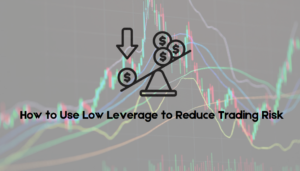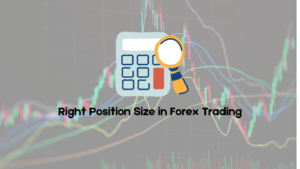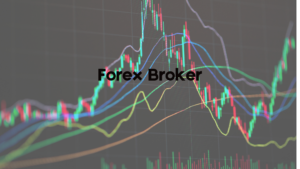A bull market in Forex refers to a prolonged period during which the prices of currencies in a particular currency pair or across the broader market are rising. This increase in value is driven by investor confidence, economic growth, and favorable geopolitical conditions, leading to a sustained demand for certain currencies. In a bull market, traders are generally optimistic, expecting prices to continue rising, and this sentiment fuels further buying activity, creating a positive feedback loop.

During a bull market, traders might observe a consistent upward trend in currency prices, characterized by higher highs and higher lows. This trend can last for weeks, months, or even years, depending on the underlying economic and market conditions. Factors such as strong GDP growth, low unemployment, and rising interest rates in a country can attract foreign investments, driving up the demand for that country’s currency and contributing to the bullish market conditions.
How does a Bull Market Differ from a Bear Market in Forex Trading?
A bull-market contrasts sharply with a bear market in Forex trading. While a bull market is characterized by rising prices and investor optimism, a bear market represents the opposite—falling prices and widespread pessimism. In a bear market, traders expect currency prices to decline, leading to increased selling activity and further driving down prices. This downward trend is marked by lower highs and lower lows, with negative economic indicators such as high unemployment, declining GDP, and low consumer confidence contributing to the overall market sentiment.
The psychological impact on traders also differs significantly between these two market conditions. In a bull market, fear of missing out (FOMO) can drive more investors into the market, reinforcing the upward trend. Conversely, in a bear market, fear of losing capital can lead to panic selling, exacerbating the downward trend. Understanding these dynamics is crucial for traders as it helps them to align their strategies with the prevailing market conditions, whether it be capitalizing on upward momentum in a bull market or protecting their assets during a bear market.
What are the Key Indicators of a Bull Market in Forex?
Several key indicators signal the onset and continuation of a bull-market in Forex. One of the primary indicators is economic growth, as reflected in a country’s GDP figures. A strong and growing economy often leads to an appreciation of the country’s currency as it attracts foreign investments. Additionally, interest rate hikes by central banks can signal a bull market. Higher interest rates offer better returns on investments in that currency, increasing demand and pushing prices upward.
Another important indicator is market sentiment. This is often measured by various sentiment indices and the overall behavior of market participants. In a bull market, you will observe a high level of investor confidence, with more traders taking long positions in anticipation of continued price increases. Additionally, technical indicators such as moving averages (e.g., the 50-day and 200-day moving averages) can help traders confirm the presence of a bull-market. When shorter-term moving averages cross above longer-term ones, it often signals a bullish trend.
These indicators, when analyzed together, provide a comprehensive view of the market conditions and help traders make informed decisions during a bull market.
Which Currency Pairs Perform Best During a Bull Market?
During a bull market, certain currency pairs tend to perform better than others, largely depending on the economic strength and stability of the countries involved .Major currency pairs like EUR/USD, GBP/USD, and USD/JPY typically perform well in a bull market, as these currencies are linked to some of the world’s largest and most stable economies. When the global economy is growing, these currencies often appreciate as investors flock to them for safety and potential returns, given the robust economic policies and political stability of the regions they represent.
Commodity-linked currencies, such as the Australian Dollar (AUD), Canadian Dollar (CAD), and New Zealand Dollar (NZD), also tend to perform strongly in a bull market. These currencies are closely tied to the export of commodities like oil, gold, and agricultural products. In a bull market, the demand for commodities usually rises due to increased industrial activity and consumer spending, boosting the value of these currencies. For example, the AUD/USD pair often sees significant gains when global economic conditions improve, as Australia is a major exporter of minerals and other raw materials.
What Strategies Work Best in a Bull Market for Forex Traders?
In a bull market, Forex traders often employ trend-following strategies to capitalize on the sustained upward movement in currency prices. One popular method is using moving averages to identify and ride the trend. Traders might look for a crossover, where a shorter-term moving average (e.g., 50-day) crosses above a longer-term moving average (e.g., 200-day), indicating the start of a bullish trend. This crossover is a signal to enter long positions, with the expectation that prices will continue to rise.
Another effective strategy in a bull market is momentum trading, where traders focus on currencies that are showing strong upward momentum. By using technical indicators such as the Relative Strength Index (RSI) or the Moving Average Convergence Divergence (MACD), traders can identify currencies that are likely to continue their upward trajectory. Additionally, breakout trading can be highly profitable during a bull market. This strategy involves identifying key resistance levels and entering a trade when the currency pair breaks above these levels, anticipating further gains.
How to Identify the Start of a Bull Market in Forex?
Identifying the start of a bull market in Forex involves a combination of technical analysis and fundamental analysis. One of the earliest signs of a bull market is a trend reversal from a previous bearish trend, often indicated by higher lows and higher highs on price charts. Traders can use tools like trend lines and moving averages to confirm these reversals. When prices consistently break above resistance levels and stay above key moving averages (such as the 200-day moving average), it suggests that a new bullish trend is emerging.
From a fundamental perspective, the start of a bull market is often heralded by positive economic indicators such as rising GDP growth, increasing employment rates, and central bank policies that favor economic expansion, like interest rate hikes. Additionally, improving geopolitical conditions can play a significant role. For instance, a resolution to a trade conflict or political stability in a major economy can boost investor confidence, leading to increased demand for certain currencies and the onset of a bull market. By keeping an eye on these fundamental factors alongside technical signals, traders can better anticipate and capitalize on the early stages of a bull market in Forex.
What Role Do Central Banks Play in Forex Bull Markets?
Central banks play a pivotal role in the formation and continuation of Forex bull markets through their monetary policies and economic interventions. By adjusting interest rates, engaging in open market operations, and implementing quantitative easing or tightening, central banks influence currency values directly. For example, when a central bank decides to raise interest rates, it often signals economic confidence and strength, leading to an appreciation of the currency as investors seek higher returns on their investments.
Furthermore, central banks’ communication and forward guidance can also shape market expectations. When central banks provide clear signals about future monetary policy, such as indicating a series of rate hikes or economic support measures, it can lead to increased investor confidence and drive a bull market in Forex. Traders closely monitor statements from central banks like the Federal Reserve, the European Central Bank, and the Bank of Japan, as these institutions’ policies can significantly impact the direction and momentum of currency markets.
How Do Interest Rates Influence a Bull Market in Forex?
Interest rates are one of the most influential factors in Forex markets and play a crucial role in the dynamics of a bull market. When a country’s central bank raises interest rates, it generally leads to an appreciation of its currency. This is because higher interest rates offer better returns on investments denominated in that currency, attracting foreign capital. For instance, if the U.S. Federal Reserve increases interest rates, the U.S. dollar may strengthen against other currencies, contributing to a bull market in USD pairs like USD/EUR or USD/JPY.
Conversely, expectations of rising interest rates can also lead to a bull market. Traders often anticipate central bank actions, and if they expect a rate hike, they might start buying the currency in advance, leading to an appreciation even before the official announcement. Additionally, interest rate differentials between countries can create favorable conditions for a bull market in certain currency pairs. If one country’s interest rates are rising while others are stable or falling, the currency with the rising rates is likely to see increased demand, driving up its value relative to others.
What Are the Risks Associated with Trading in a Bull Market?
While trading in a bull market can offer significant profit opportunities, it is not without risks. One of the primary risks is market overconfidence. In a bull market, traders may become overly optimistic, leading to excessive speculation and the potential for sharp corrections when market conditions change. For instance, a sudden negative economic report or unexpected geopolitical event can trigger panic selling, causing prices to drop rapidly and leading to significant losses for traders who were overly leveraged or unprepared for such volatility.

Another risk is the temptation to enter trades late in the bull cycle, when prices may have already reached unsustainable levels. Latecomers to the market might find themselves buying at or near the peak, only to suffer losses when the market eventually corrects. Additionally, in a bull market, herd behavior can exacerbate these risks, as traders follow the crowd rather than relying on their own analysis, leading to bubbles and subsequent crashes. To mitigate these risks, traders should maintain disciplined risk management strategies, such as setting stop-loss orders and avoiding excessive leverage, while staying informed about potential market-moving events.
How Can You Protect Profits During a Bull Market in Forex?
Protecting profits during a bull market in Forex requires a combination of disciplined risk management and strategic decision-making. One of the most effective methods is using trailing stop-loss orders. Unlike a fixed stop-loss, which stays at a set level, a trailing stop moves with the market price. As the currency pair’s price increases, the trailing stop adjusts upwards, locking in profits while still allowing for further gains if the market continues to rise. This tool helps traders avoid giving back profits in the event of a sudden market reversal.
Another strategy to protect profits is diversification. Instead of placing all investments in a single currency pair, traders can spread their exposure across multiple pairs or even different asset classes. This reduces the risk of a significant loss from a downturn in one particular pair. Additionally, scaling out of positions can be an effective tactic. As the market continues to rise, traders can gradually reduce their position size, taking partial profits while keeping some exposure to benefit from further gains. This approach helps to secure profits incrementally without completely exiting a potentially profitable trade.
What Tools and Indicators Help Predict a Bull Market in Forex?
Predicting a bull market in Forex involves the use of several technical and fundamental tools and indicators. Moving averages, such as the 50-day and 200-day moving averages, are popular tools for identifying the onset of a bull market. When a shorter-term moving average crosses above a longer-term one (a crossover), it often signals the beginning of an upward trend. This crossover, known as a “golden cross,” is a strong indicator that a bull market may be forming.
In addition to moving averages, momentum indicators like the Relative Strength Index (RSI) and Moving Average Convergence Divergence (MACD) are valuable for gauging the strength of a trend. An RSI reading above 70 typically indicates that a currency pair is overbought, suggesting strong upward momentum, while the MACD can help confirm the strength and direction of the trend. On the fundamental side, economic indicators such as GDP growth, employment data, and central bank policies are crucial. Positive economic data and hawkish central bank signals often precede the start of a bull market, as they boost investor confidence and drive demand for a country’s currency.
How Long Do Bull Markets Typically Last in Forex Trading?
The duration of bull markets in Forex trading can vary widely, depending on the underlying economic conditions and market sentiment. Some bull markets can last for several months, driven by sustained economic growth, positive geopolitical developments, or prolonged periods of favorable central bank policies. For example, a country experiencing a strong economic recovery might see its currency appreciate steadily over an extended period, creating a prolonged bull market.
However, bull markets can also be shorter-lived, particularly if they are driven by temporary factors like speculative trading or short-term economic data releases. In some cases, a bull market might last only a few weeks or even days before market conditions change. The length of a bull market is often influenced by external factors such as shifts in global economic trends, changes in interest rates, or unexpected geopolitical events that can quickly alter investor sentiment. As a result, traders must remain vigilant and adapt their strategies to changing market conditions to maximize their gains while minimizing potential losses during the bull market cycle.
What Economic Events Can Trigger a Bull Market in Forex?
Several key economic events can trigger a bull market in Forex, primarily driven by factors that enhance a country’s economic outlook or create favorable conditions for its currency. Interest rate hikes by central banks are among the most significant triggers. When a central bank raises interest rates, it often signals economic strength and a desire to control inflation, which makes the currency more attractive to investors seeking higher returns. For instance, if the Federal Reserve increases U.S. interest rates, the U.S. dollar might appreciate, triggering a bull market in USD pairs.
Another crucial economic event is the release of positive GDP growth figures. Strong economic growth typically leads to higher employment rates, increased consumer spending, and overall economic stability, which are all positive signals for a country’s currency. Additionally, trade agreements or geopolitical stability can also trigger a bull market. For example, the resolution of a trade dispute or the signing of a significant trade deal can boost investor confidence in a country’s economy, leading to an increased demand for its currency and initiating a bull market.
How Does Market Sentiment Influence Forex Bull Markets?
Market sentiment plays a crucial role in the formation and sustainability of Forex bull markets. Investor confidence is often the driving force behind a bull market, as traders’ collective optimism leads to increased buying activity, pushing currency prices higher. Positive sentiment can be fueled by a variety of factors, including favorable economic data, positive news reports, and optimistic forecasts about future economic conditions. When market participants believe that a currency will continue to rise, their actions often create a self-fulfilling prophecy, where buying pressure keeps driving prices up.
Moreover, herd behavior in Forex markets can amplify the effects of market sentiment. When traders see others profiting from a rising market, they are likely to jump in, further accelerating the trend. This momentum can sustain a bull market, even in the face of mixed or slightly negative economic indicators, as long as the overall sentiment remains positive. However, this also means that bull markets can be fragile and prone to sudden reversals if sentiment shifts, which is why understanding and monitoring market sentiment is critical for Forex traders.
What Are the Best Practices for Trading During a Bull Market in Forex?
Trading during a bull market in Forex requires a strategic approach to maximize profits while managing risks. One of the best practices is to ride the trend by employing trend-following strategies. This involves identifying the prevailing direction of the market and entering trades that align with this trend. Tools such as moving averages, trend lines, and the Relative Strength Index (RSI) can help traders confirm the strength and direction of the trend, allowing them to make informed decisions about when to enter or exit trades.
Another important practice is to maintain disciplined risk management. Even in a bull market, where prices are generally rising, it’s essential to protect against potential losses from sudden reversals. Using tools like stop-loss orders and trailing stops can help lock in profits and limit losses. Additionally, traders should avoid overleveraging their positions, as this can lead to significant losses if the market turns against them. Diversifying trades across multiple currency pairs or even different asset classes can also reduce risk exposure.
Finally, it’s crucial to stay informed and adaptable. Bull markets can be driven by various factors, and conditions can change quickly. Keeping up with economic news, central bank announcements, and global events allows traders to adjust their strategies as needed. By combining technical analysis with a strong understanding of market fundamentals and sentiment, traders can navigate bull markets more effectively and capitalize on opportunities while minimizing risks.
How to Transition from a Bull Market to a Bear Market in Forex?
Transitioning from a bull market to a bear market in Forex requires careful observation and timely adjustments to trading strategies. The first step is to recognize the signs of an impending market reversal. These signs might include a slowdown in economic growth, deteriorating economic indicators (such as declining GDP or rising unemployment), or shifts in central bank policies that signal potential economic contraction. Technical indicators like a crossover of moving averages, where a shorter-term moving average falls below a longer-term one (known as a “death cross”), can also suggest that a bull market is losing momentum and a bear market may be on the horizon.
Once a transition is identified, traders should consider adjusting their trading positions. This might involve reducing exposure to long positions that have benefited from the bull market and gradually increasing short positions that profit from declining prices. It’s also crucial to tighten risk management practices during this period. Stop-loss orders should be adjusted to protect profits from the bull market while minimizing losses as the market trend changes. Additionally, adopting a more conservative approach by reducing leverage and diversifying investments can help mitigate risks during the transition.
What Historical Examples of Bull Markets in Forex Can Traders Learn From?
One notable historical example of a bull market in Forex is the U.S. dollar’s rise in the 1980s. During this period, the U.S. dollar experienced a significant bull run, driven by a combination of high-interest rates set by the Federal Reserve under Chairman Paul Volcker and strong economic growth in the United States. This period offers key lessons for traders, particularly the impact of central bank policies on currency strength. The Fed’s aggressive stance on controlling inflation by raising interest rates made the U.S. dollar highly attractive to investors, leading to a prolonged bull market.

Another example is the Euro’s bull market following its introduction in 1999. The Euro initially appreciated significantly as it replaced several major European currencies, reflecting confidence in the economic integration of Europe. However, this bull market was influenced by complex factors, including the alignment of multiple national economies and the balancing act between economic growth and monetary policy within the Eurozone. Traders can learn from this example the importance of geopolitical factors and economic cohesion in sustaining a bull market in Forex.
How Does Volatility Impact Forex Trading in a Bull Market?
Volatility plays a crucial role in Forex trading during a bull market, often presenting both opportunities and risks. In a bull market, volatility can increase as prices rise, driven by high trading volumes and speculative activity. While this can create opportunities for traders to profit from rapid price movements, it also requires careful risk management. High volatility means that prices can swing widely in a short period, potentially leading to significant gains or losses. Traders must be prepared to react quickly to market changes, using tools like stop-loss orders to protect their positions.
Moreover, volatility can indicate the strength or fragility of the bull market. For example, steady, low-to-moderate volatility might suggest a stable, sustainable bull market, where price increases are supported by strong fundamentals. On the other hand, if volatility spikes without clear fundamental support, it could signal that the bull market is driven more by speculation and is at risk of a sharp correction. Traders should monitor volatility closely, as it can provide insights into market sentiment and help in adjusting strategies to either capitalize on or protect against rapid price changes.
What Role Does Technology Play in Forex Trading During a Bull Market?
Technology plays a vital role in enhancing Forex trading during a bull market, offering traders the tools and resources needed to maximize their opportunities. Advanced trading platforms provide real-time data, sophisticated charting tools, and automated trading capabilities, allowing traders to execute strategies quickly and efficiently. These platforms often include features like algorithmic trading, where predefined criteria can automatically trigger trades, helping traders take advantage of rapid price movements in a bull market without the need for constant monitoring.
In addition, technology facilitates access to global markets and real-time information, enabling traders to stay informed about economic developments, central bank decisions, and geopolitical events that may impact currency prices. High-frequency trading (HFT) systems, powered by advanced algorithms and artificial intelligence, allow institutional traders to capitalize on minute price discrepancies at speeds unattainable by human traders. For individual traders, social trading platforms and AI-driven analytics provide insights and signals that can guide decision-making during a bull market, helping them align their strategies with market trends and maximize their potential profits.
In Forex trading, understanding and navigating bull markets is crucial for maximizing profits and managing risks. Bull markets are driven by a combination of economic strength, central bank policies, and investor sentiment, all of which contribute to rising currency prices. Key indicators such as interest rate hikes, GDP growth, and positive market sentiment help traders identify and capitalize on these upward trends. However, as with any market condition, bull markets come with their own set of challenges, including increased volatility and the potential for sudden reversals. Recognizing the signs of a transition from a bull to a bear market, such as deteriorating economic indicators or shifts in central bank policies, is essential for adjusting strategies and protecting profits.
Technology plays a vital role in enhancing trading efficiency during bull markets, offering advanced tools for analysis, automated trading, and real-time access to global markets. Historical examples of bull markets, such as the U.S. dollar’s rise in the 1980s and the Euro’s appreciation after its introduction, provide valuable lessons on the influence of economic policies and geopolitical factors. By combining these insights with disciplined risk management practices and staying informed through technological tools, traders can effectively navigate the complexities of bull markets, capitalizing on opportunities while safeguarding their investments against potential downturns.







